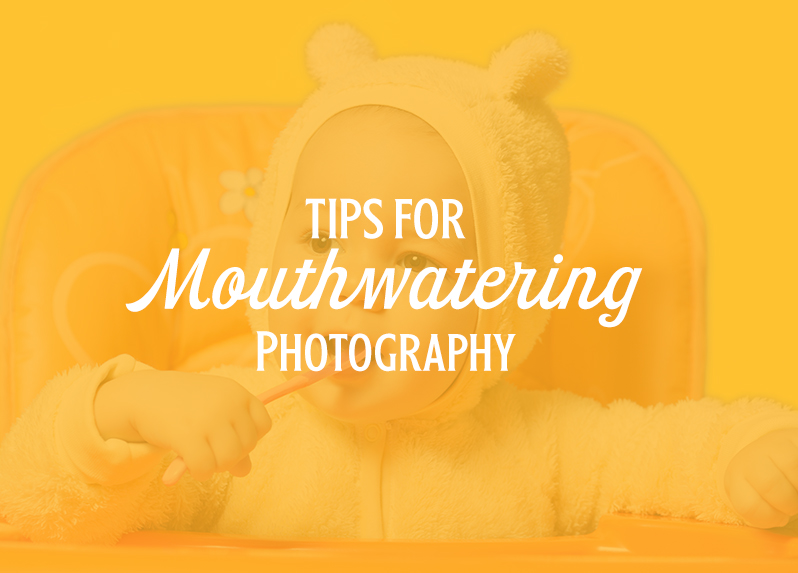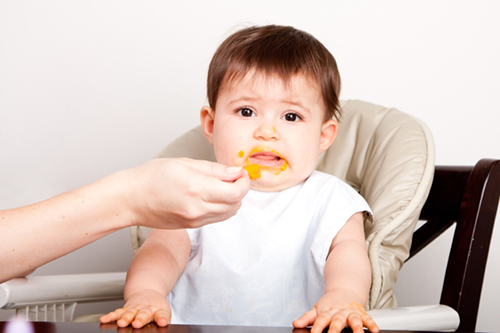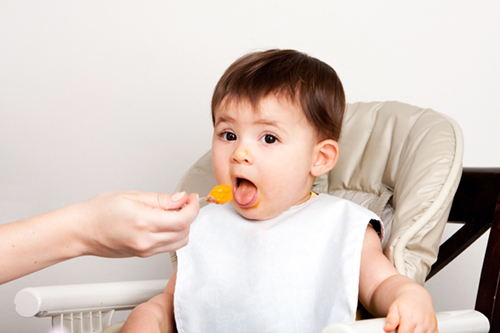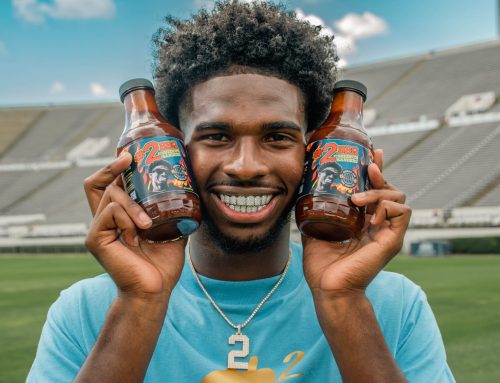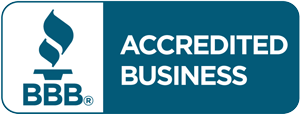TIPS FOR TAKING MOUTHWATERING PHOTOS
Getting this reaction from your food photography?
Here are some tips to add some flavor and spice into your food photography style, and get more reactions like THIS!
Angles, angles, angles.
In general, finding interesting angles makes for better photography. Try overhead, straight on, an angle that emphasizes your subject, or any other interesting angle you can think of. Make sure you understand where the photo is going to be used, and if the food brand has a certain style set in place already as well.
Use a Tripod
For the most part, you’re going to want to capture crystal clear images of your food subject(s). Even the most concentrated and still hands can capture an image that’s not completely clear – something as subtle as your own heartbeat can throw off an image’s clarity. The best solution is to use a tripod to guarantee your camera is secured. This can come in handy especially when you’re taking overhead shots, or shots that need to be at a particular angle.
Depth of Field
Utilizing depth of field in food photography is a very popular style. It places your subject in focus, and the rest of the photo out of focus. It allows viewers to direct their attention at the subject instantaneously.
Use Negative Space
Depending on the type of style you’re going for, using negative space can be just what your photos need. If the brand you’re shooting for is very simple, or you know the photos will be used in ads with copy, negative space will be a great way to set up your style for the brand.
Simple Props
Sometimes simplicity is key; however, adding simple props in around your subject can help tell a story. For instance, if you’re shooting photos of a pasta dish, try placing the full, fresh ingredients around the pasta dish. This will demonstrate that the pasta dish is made with fresh ingredients, and that your dish is authentic. Depending on the food item, adding simple props around your subject can create a more unique image.
Add a Human Element
Sometimes utilizing hands or a human element can add a unique & interesting style to your photos. Messy children’s hands adds a whimsical tone to your photos, while a woman’s hand holding a wine glass with her pinkie finger sticking out would add a sense of elegance to your photo.
Keep it Clean
Restaurants and chefs care about presentation of their dishes, and so should all food photographers! Keep your plates and dishes as clean as possible. If you do miss a spot in the photoshoot, tools like Adobe Photoshop and Adobe Lightroom can be helpful for any minor touch-ups. However, keeping everything as clean as possible will save time later in the photo editing process.
White Sheet in the Window
If you’re using natural light, cover windows with a white sheet. The white sheet will allow the light to bounce into the shot softly. Harsh light can create unwanted, dramatic shadows and unwanted reflections.
Keep Ice/Icy Water Nearby
Need your subject looking fresh and shiny? Make sure to have ice cubes or icy water nearby. For example, if the tomatoes in your shot need to look like they were just washed, dab an ice cube on the tomatoes to add beads of water. Using a small paintbrush works well, too.
Keep it Legal: Truth in Food Advertising and Photography
Obviously, you want your photoshoot to make your food look as enticing as possible. However, there is a line that can be drawn between a good photo and false advertising. It’s so important to know the legalities behind advertising in the food industry. The American Bar Association provides a guideline for food stylists and photographers.
Essentially, you cannot fake the product or brand you’re advertising, or enhance it in an untruthful way. Campbell’s Soup was involved in a lawsuit in the 1970’s regarding the way they advertised one of their products. The food stylist put marbles into the soup to make the vegetables rise to the top of the soup and ultimately make the soup look more chunky, and like it has more vegetables than it does in reality.
To learn more about food advertising laws, read this full excerpt from the American Bar Association.
Other Hacks: USE CAUTION
Before you start using engine oil for your next Aunt Jemima syrup photoshoot, take the previously stated laws into consideration. However, if you need to make any of your background (not featured) products last longer under lots of hot lights during a lengthy photoshoot, here are some hacks food stylists have used before. For all examples below, remember, these definitely aren’t legal if they are the subject of your shoot. If they are products being used in the commercial in the background or as a prop, you might be able to use these hacks. It’s better to be safe (and honest) than sorry.
If you’re unsure, it’s best practice to consult with a lawyer to make sure your photoshoot is full proof and totally legal.
Engine Oil Instead of Maple Syrup
That’s right – don’t try the pancakes at a photoshoot! The pancakes do not soak up oil as quickly as they would maple syrup, and have the same color, texture, and consistency as each other. Don’t use this trick for a maple syrup commercial.
Spray cutlery with Anti-glare spray
To keep your distorted face or hands holding the camera from popping up in the reflections of your cutlery, try spraying them with anti-glare spray! It’ll do the trick without damaging your utensils.
Olive oil
Olive oil is a blessing, not only in the kitchen, but also in the photo studio. Adding a touch of olive oil to items can make them look extra fresh. Vegetables are an excellent example of this – adding olive oil to them to keep them from wilting during an extensive photoshoot.
Deodorant spray can add shine to fruit
Keep your fruit looking fresh in the most artificial way possible! Spray deodorant adds shine to your fruit. However, don’t do this for an advertisement for a specific fruit or fruit brand.
Glucose syrup for Chinese noodles
Ever wonder how Chinese noodles always have a perfect shimmer? It’s not the kind of soy sauce you’re used to – it’s actually glucose syrup! But, don’t fool your target audience by showing this as a final product of a Chinese noodle brand, as that would be enhancing your product in an untruthful way.
Liquid Soap creates foam
When you pour a carbonated beverage into a glass, there’s always going to be a little bit of foam. However, that foam doesn’t stay for long. To make sure you’re not pouring drinks over and over and over again during your photoshoot, add a little bit of liquid soap to your beverage to create longer-lasting foam. I
Shaving Cream instead of whipped cream
Whipped cream “deflates” and melts so quickly. Using shaving cream is a great alternative to using the actual item, but only if it is used in the background and not as the subject of your shoot (ie don’t use this for an ad selling whipped cream).
Plastic Ice Cubes
Another quickly melt-able item is an ice cube. It’s definitely worth the investment to purchase fake ice cubes – you can reuse them and not have to worry about anything melting!
Glue instead of milk
Keep that cereal from getting soggy by using glue instead of milk! It will keep your cereal in place, and eliminate dramatic reflections. (Don’t use milk instead of glue if your photoshoot is for a milk brand).
Adding antacids to carbonated beverages
Keep those drinks fizzin’! Add antacids to the beverages to ensure the bubbles keep on coming throughout the photoshoot.
Grill Marks made by eyeliner or charcoal starter
Don’t have a grill, but need grill marks? Food stylists have used charcoal starter and eyeliner to add grill marks to products.
Corn Syrup
Need your grapes to stick together a little nicer for your shot? Corn syrup could become your trusty sidekick – it helps stick items together in a pinch. Also, it can be easily found in most grocery stores.
Keep Greens in a Wet Napkin in the Fridge
Don’t leave your lettuce out in the open to wilt. Keep your greens in a wet napkin in the refrigerator, and wait until it’s time for the greens’ close-up shot.
Full Bowls
Place a smaller bowl upside down in the larger bowl, then place food on top of the smaller bowl to create the illusion of a full bowl. Remember, do not do this if the item in the bowl is the subject of your shot – it will create an unrealistic depiction of serving sizes. Refer back to the Campbell’s Soup case to see how this trick actually cost the company a lawsuit.
Fake Steam
Soak cotton balls in water and microwave them – it will create fake steam!
Need to develop branding or advertise your food products? At ocreations, we have years of experience working with clients in the food industry – Come Ready Nutrition, Pasta Too, Giant Eagle, just to name a few! Contact us at ocreations. We’re always hungry for new projects. Let’s get creative!
